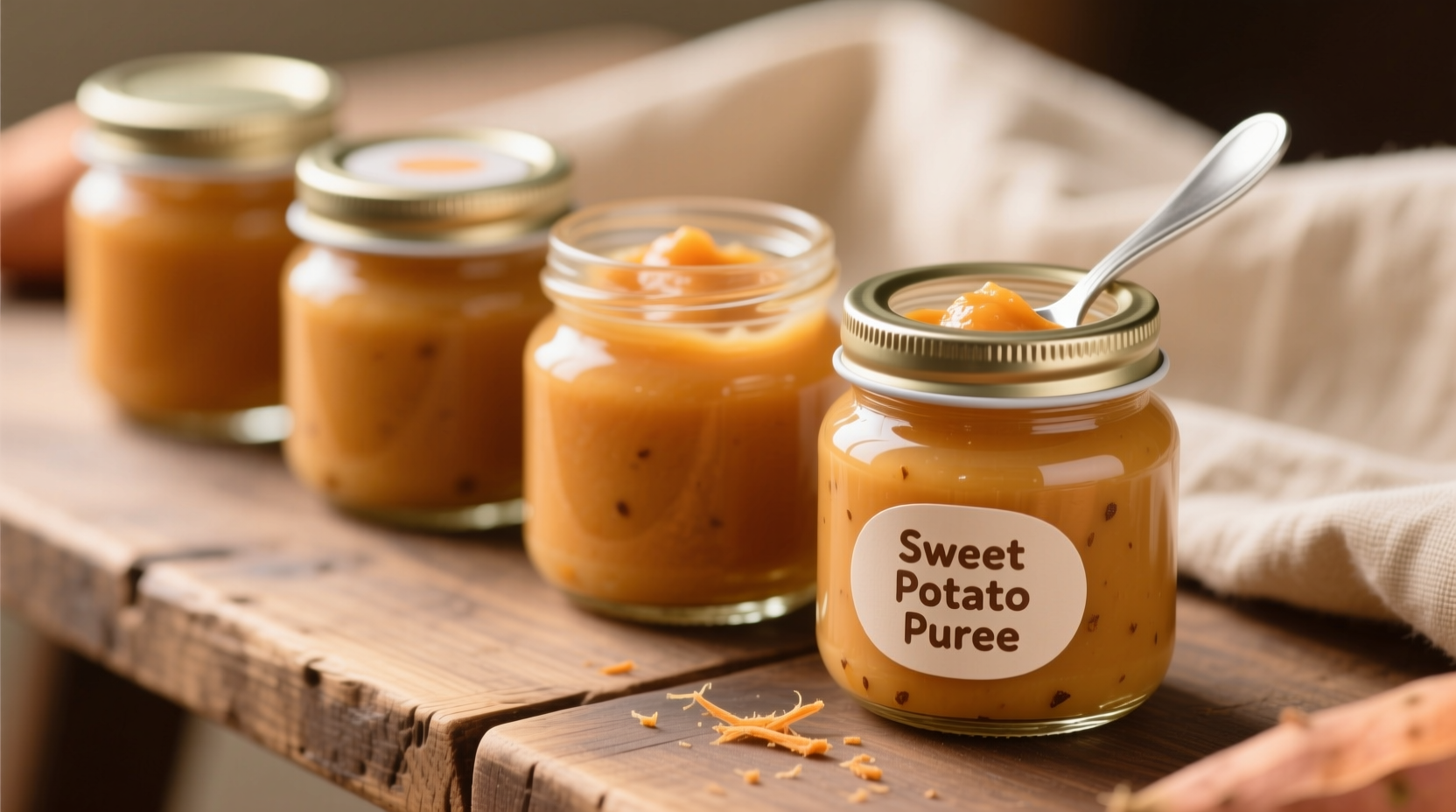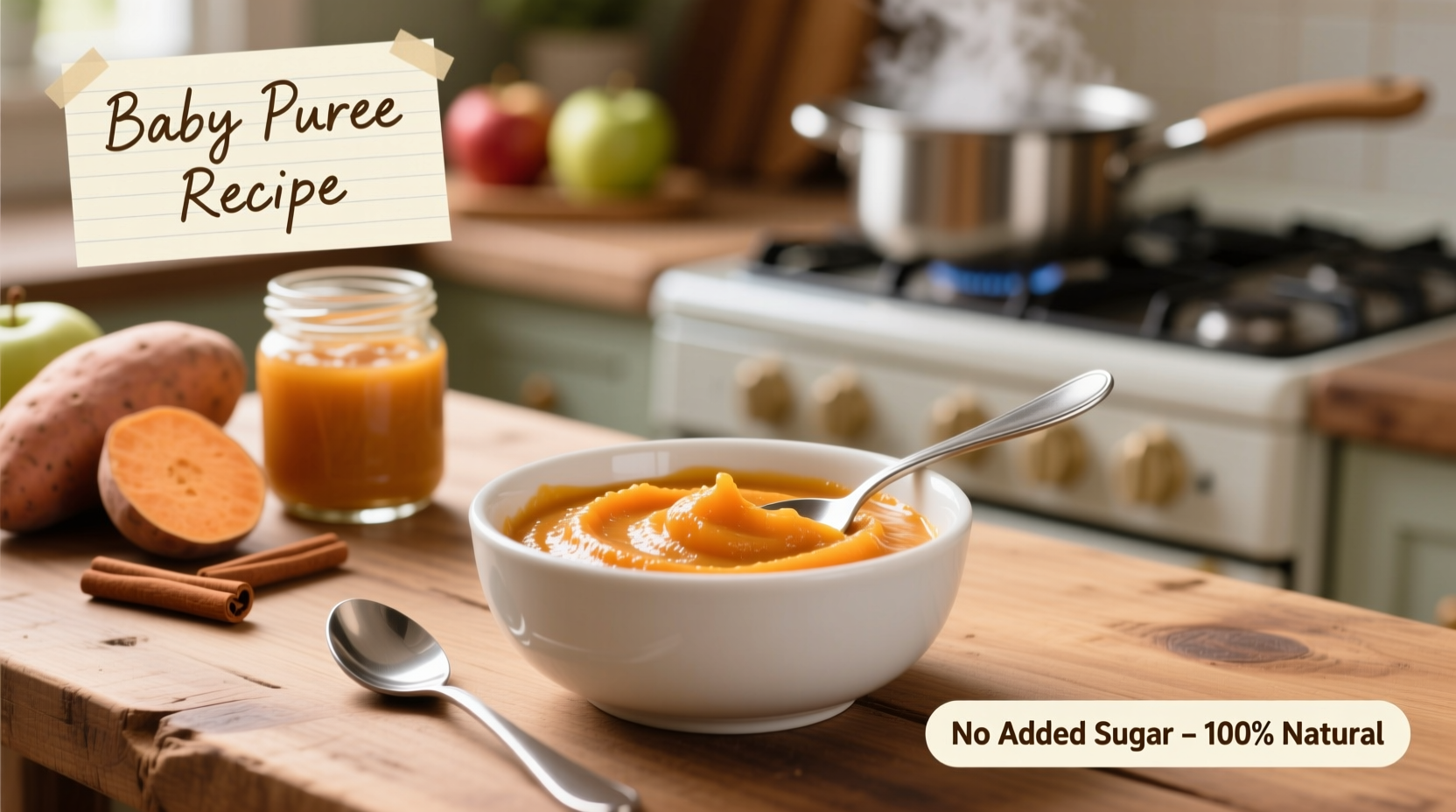Creating homemade sweet potato puree gives you complete control over ingredients and texture, providing your baby with a nutrient-dense first food option packed with vitamins A and C, fiber, and complex carbohydrates. Unlike store-bought alternatives, homemade puree contains no preservatives or added sugars, making it ideal for sensitive infant digestive systems.
Why Sweet Potatoes Make an Excellent First Food
Sweet potatoes rank among the top recommended first foods for babies due to their naturally sweet flavor, smooth texture when pureed, and exceptional nutritional profile. According to the American Academy of Pediatrics, sweet potatoes provide essential nutrients that support healthy development during the critical first year.
The vibrant orange color indicates high beta-carotene content, which converts to vitamin A in your baby's body—crucial for vision development, immune function, and skin health. Unlike white potatoes, sweet potatoes have a lower glycemic index, providing sustained energy without blood sugar spikes.
When to Introduce Sweet Potato Puree
Most pediatricians recommend introducing solid foods around 6 months of age, when babies typically show readiness signs including:
- Maintaining head control while sitting
- Showing interest in family meals
- Opening mouth when food approaches
- Losing the tongue-thrust reflex
| Age Range | Texture Progression | Consistency Tips |
|---|---|---|
| 6-7 months | Thin, smooth puree | Blend with breast milk/formula to milkshake consistency |
| 8-9 months | Slightly thicker puree | Reduce liquid; should hold shape briefly on spoon |
| 10-12 months | Mashed texture | Small soft lumps; encourage self-feeding |
This texture progression timeline aligns with recommendations from the Centers for Disease Control and Prevention for developing oral motor skills and preventing feeding difficulties.
Selecting the Best Sweet Potatoes for Baby Food
Choose organic sweet potatoes when possible to minimize pesticide exposure for your baby. Look for firm potatoes without soft spots, cracks, or signs of sprouting. While all varieties work well, orange-fleshed sweet potatoes (often labeled as 'yams' in US markets) provide the highest beta-carotene content.
Store sweet potatoes in a cool, dark place for up to 3 weeks. Never refrigerate them before cooking, as cold temperatures can affect texture and flavor. Wash thoroughly under running water and scrub with a vegetable brush to remove dirt before peeling.
Step-by-Step Preparation Guide
Peeling and Cutting
Peel sweet potatoes using a sharp vegetable peeler. Cut into 1-inch cubes for even cooking—smaller pieces cook faster and puree more smoothly. Uniform sizing prevents some pieces from becoming mushy while others remain undercooked.
Cooking Methods Compared
Two primary cooking methods work well for baby food preparation:
| Method | Time Required | Nutrient Retention | Best For |
|---|---|---|---|
| Steaming | 15-20 minutes | Excellent (minimal water contact) | Maximum nutrient preservation |
| Boiling | 12-15 minutes | Good (some nutrients leach into water) | Softer texture, faster cooking |
Research from the National Institutes of Health shows steaming preserves more water-soluble vitamins compared to boiling. However, both methods produce safe, nutritious baby food when executed properly.
Perfect Steaming Technique
- Place cubed sweet potatoes in a steamer basket
- Add 1 inch of water to saucepan (water shouldn't touch basket)
- Cover and bring to boil
- Steam 15-20 minutes until fork-tender
- Test doneness by piercing with fork—should slide in easily
Pureeing to Ideal Consistency
Transfer cooked sweet potatoes to a blender or food processor. For 6-7 month olds, start with a thin consistency:
- 1 cup cooked sweet potatoes
- ¼ cup breast milk, formula, or water
Blend until completely smooth, stopping to scrape down sides as needed. Add liquid gradually until reaching desired consistency—similar to heavy cream. For older babies, reduce liquid for thicker texture.

Safety Considerations and Best Practices
Follow these critical safety guidelines when preparing baby food:
- Temperature control: Cool puree to lukewarm before serving (test on wrist)
- Storage limits: Refrigerate for up to 48 hours or freeze for 3 months
- Reheating: Heat thoroughly to 165°F (74°C) before serving
- Single-ingredient introduction: Offer sweet potatoes alone for 3-5 days before mixing with other foods
The FDA recommends introducing single-ingredient foods first to identify potential allergies. Watch for signs of allergic reaction including rash, vomiting, or difficulty breathing.
Storage and Freezing Techniques
Portion puree into ice cube trays for convenient single servings. Once frozen solid (about 4 hours), transfer cubes to labeled freezer bags with date and contents. Thaw overnight in refrigerator or using warm water bath—never microwave baby food unevenly.
Discard any uneaten puree after feeding. Bacteria from baby's mouth can contaminate leftovers, making them unsafe for later consumption.
Troubleshooting Common Issues
Problem: Puree is too watery
Solution: Simmer uncovered in saucepan for 5-10 minutes to reduce excess moisture
Problem: Puree is too thick
Solution: Add liquid 1 tablespoon at a time while blending until reaching proper consistency
Problem: Grainy texture
Solution: Ensure sweet potatoes are fully cooked before blending; strain through fine mesh sieve if necessary
Remember that homemade baby food lacks stabilizers found in commercial products, so separation is normal. Simply stir before serving.
When to Consult Your Pediatrician
While sweet potatoes are generally well-tolerated, consult your pediatrician before introducing solid foods if your baby has:
- History of food allergies
- Gastrointestinal issues
- Family history of food sensitivities
- Developmental delays affecting feeding
Always follow your healthcare provider's specific recommendations for your child's unique needs.











 浙公网安备
33010002000092号
浙公网安备
33010002000092号 浙B2-20120091-4
浙B2-20120091-4